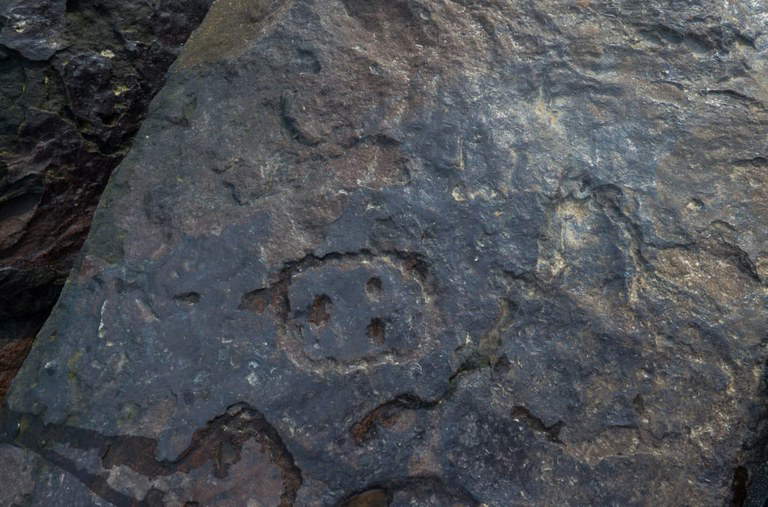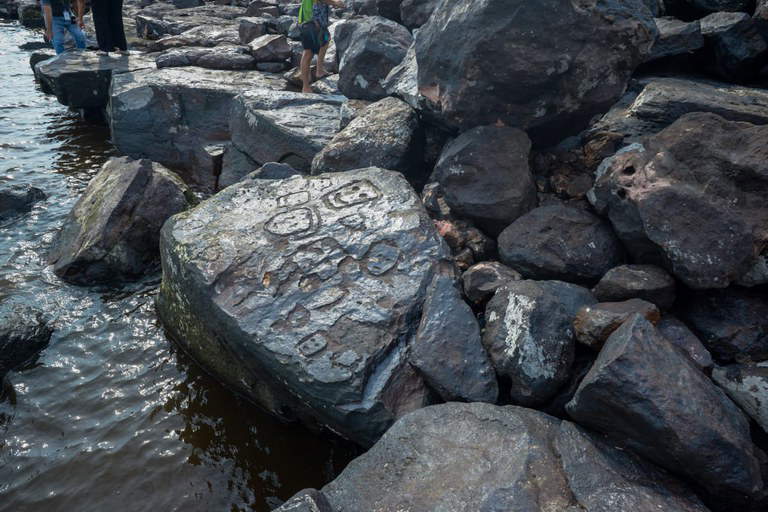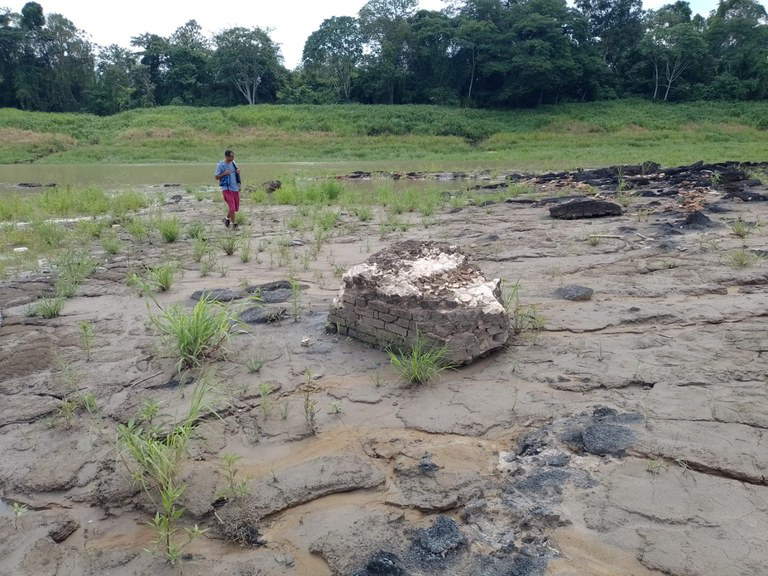Climate change and weather events that are anomalous to what scientists are used to recording also lead to otherwise unexpected discoveries. Indeed, the drought of this 2023 has led to a lowering of the water level of the Amazon River in Brazil by as much as 15 meters, consequently bringing to the surface areas of the riverbanks and riverbed that had hitherto been hidden. And on just a few, several, rocks at the river’s edge, engravings on stones that look like drawings of faces and people have come to human view. Petroglyphs that were glimpsed back in 2010, with similar drought, and are now showing up again. Mind you: the lowering of the water level to such an extent is a very serious thing that certainly cannot be compensated by a find of this kind, however both those engravings have aroused the interest of Brazilian institutions and the scientific community.
We are in the area of Manaus, in the state of Amazonas, in Ponto das Lajes, near the confluence of the Rio Negro and Solimões rivers: here a series of engravings are clearly visible that unmistakably compose human faces carved in stone (as the Rai images show)
Archaeologist Jaime de Santana Oliveira Oliveira, of the National Institute of Historic and Artistic Heritage (IPHAN), which oversees the preservation of historic sites, explained to the international news agency Reuters that the first finds date back to 2010, but the prolonged drought, with the Rio Negro, the main tributary of the Amazon, having dropped 15 meters since July, has allowed us to see the number and quality of these: “This time we found not just signs, but depictions of the human face etched into the rock, although we cannot date them exactly, based on evidence of human settlements in the region, we believe they may date from about 1.000-2,000 years ago. They allow us to understand the lifestyle of prehistoric people.”


The representations are mostly of faces, which the local community popularly calls “caretas”: thousand-year-old engravings therefore hidden underwater that represent not only human figures but also animals well before the arrival of Europeans. There are also engravings that show the presence of a kind of lithic workshop with signs of workmanship. The Lajes site still preserves local polishing pools where, thousands of years ago, indigenous people made their tools, such as hatchets.
But that’s not all: this drought of historic magnitude, considered the worst in 121 years, has unearthed three other archaeological sites in different parts of Amazonas state that are completely unknown and of great significance, according to IPHAN. These are the ruins of Fort São Francisco Xavier in the municipality of Tabatinga (Amazonas), built during the 18th century on the banks of the Solimões River on the border between Brazil, Colombia and Peru. The building was the last stop for those navigating the Solimões to the Andes during the colonial period, particularly ships heading to the Spanish city of San Pablo de Loreto, Peru, marking the Portuguese Crown’s dominions in the Amazon region. Built of solid wood, the fortification was in the shape of an irregular hexagon and contained nine artillery pieces, of which five remain: two are on display at the National History Museum in Rio de Janeiro and three at the Brazilian army barracks in Solimões. The building is considered a milestone in the consolidation of the Brazilian border in the northern region. IPHAN technicians inspected the ruins of the fort to register the site in the National Register of Archaeological Sites (CNSA), a database that brings together information on archaeological assets in Brazil.

The second is the Costa do Goiabeira site in the municipality of Anamã, 160 km from Manaus. Cinerary urns made of ceramic material have come to light with the drought. The third of the sites is located in the municipality of Urucará, on the banks of the Uatumã River. It consists of petroglyphs, similar to those discovered at Ponta das Lajes, in which engravings made on stones can be seen. Classified as precolonial, the sites represent the lifestyle of the people who inhabited that region in the past. Both the Anamã and Urucará sites are not yet registered with the CNSA . IPHAN only learned of the existence of these traces during the drought of 2023 , necessitating visits to be made in collaboration with other research institutions in the state of Amazonas in the coming weeks.
“At this time when rock carvings and ceramic artifacts are appearing all over ’Amazonas, we cannot fail to recognize the opportunities for research and enhancement of our history, but also the harsh reality of the greatest drought in 121 years that has affected our people,” says Superintendent Beatriz Evanovick. “We express our solidarity with the affected communities and reaffirm our commitment to preserve and care for this heritage in the midst of such daunting challenges. In addition to recording and informing, we plan with the team and partners the next steps in preserving and caring for this historic and archaeological heritage.”
 |
| Amazon, record drought uncovers ancient carvings and three unknown archaeological sites |
Warning: the translation into English of the original Italian article was created using automatic tools. We undertake to review all articles, but we do not guarantee the total absence of inaccuracies in the translation due to the program. You can find the original by clicking on the ITA button. If you find any mistake,please contact us.